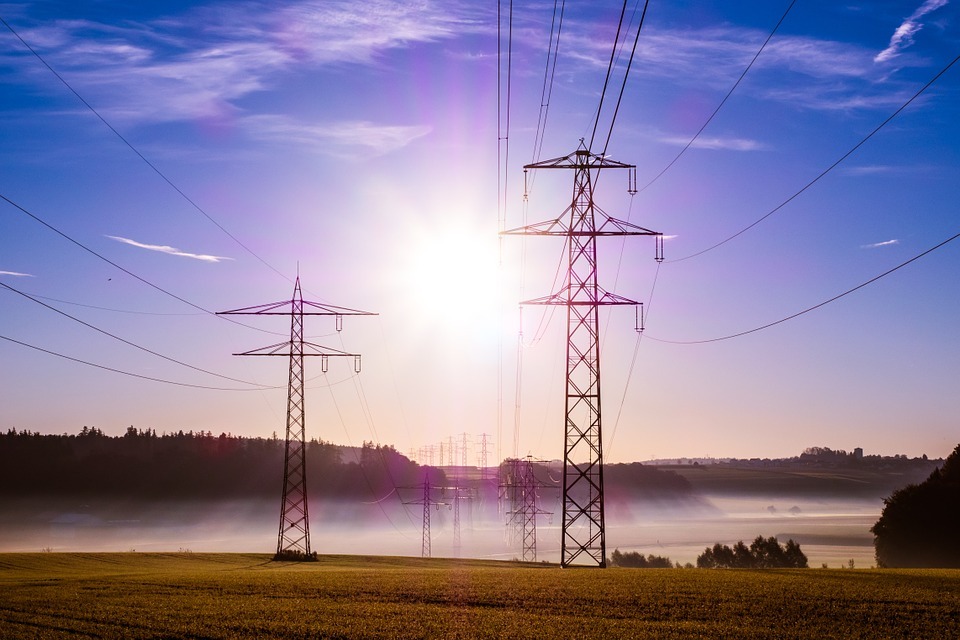In the electrical supply system, three different parts can be distinguished
The generation of electrical energy that consists of transforming some kind of chemical, mechanical, thermal or light energy, among others, into electrical energy. Power Plants produce the energy necessary to satisfy consumption. These plants are far from the consumption points, for this reason the energy generated in them must be transported. The alternators of the power plants usually generate electrical energy at a voltage between 6Kv and 18Kv.
The transport of Electric Energy is carried out by means of 220Kv or 400Kv High Voltage (HV) electric lines and allows the energy produced in the power plants to be carried to the consumption centers. Later we will see why it is done in AT.
Distribution is what makes it possible for energy to reach customers or end consumers from HV transmission lines. Its transformation centers and substations are reducing the voltage from HV (high voltage) in the transmission lines through Transformer Substations (SET), to LV (low voltage) 400V or 230V for final consumers through Distribution Transformer Stations (STD) and the Transformation Centers (CT). Distribution can be by overhead distribution networks or by underground networks.
Why is Electrical Energy Transported in High Voltage?
We see how the electrical energy is generated at 6Kv and the voltage is raised to transport it at high voltage (220 -400 Kilovolts).
So that the section of the cables through which it travels is as small as possible and reduces costs. The Transport Network has a length of approximately 45,000 km, the greatest cost that occurs when transporting energy is that of the conductors. If the conductors are of little section, it means that they will be much less expensive. Contact ESD LLC for any kind of electrical supply needs.
What does the section of conductors depend on? Well, of the intensity that circulates through it. If we manage to circulate low intensity through the drivers, we will have cheaper transport lines.
What we want is to transport electrical energy from one place to another to check the information from CHINT power transmission and distribution. It turns out that electrical energy is:
Energy = Power x time.
Time is a factor that will not influence at all for the section of the cables, which will influence the power to be transported. What we need is to generate a certain power from a point that is generated to a point that is consumed. In short, we can say that power is transported.
Power = Voltage x Intensity.
To transport the same power, if we raise the voltage in the product of the formula a lot, it turns out that the intensity is reduced.
With which it is shown that:
The Higher Tension ==> Lower Intensity ==> Lower Conductor Section ==> Lower Cost of Transmission Lines.
Note that to transport energy, thousands of kilometers of cables are needed, so the savings are very great.
Although it is transported in HV, logically before reaching the homes we will have to lower the voltage so that the facilities are not dangerous to people, so the end user uses 400V or 230V voltages.
This voltage drop is gradually lowered by transformers in various phases that are grouped into so-called substations.
Electrical Substations
These transformers, which lower the voltage before reaching the cities, are called Electrical Substations, and they can be intermediate or direct distribution. Their mission is to lower the voltage until it reaches 230V (in homes), 400V or higher (in industry) and that we can use it directly.
Logically, it cannot be lowered from 400,000 Volts, for example directly to 230V, it is better to do it little by little as we approach the points of use. This is the reason why we come across different Intermediate Electrical Substations before reaching the cities.
There are even some types of industries (large and medium) that need voltages other than the normal 230V or 400V, therefore, they will also need intermediate substations. They usually have their own substation called “Transformation Center”, instead of Substation.
The Distribution Substations already directly lower the voltage to 230V or 400V for use in homes or small industry.

